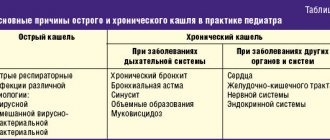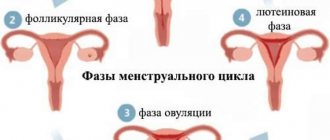The widely used term “toxicosis” characterizes the pathological state of the body, provoked by hormonal and physiological changes caused by pregnancy. The pathology is accompanied by the appearance of characteristic symptoms: nausea, vomiting, fatigue, weakness, as well as a number of others, and can occur both in the first and subsequent trimesters of pregnancy.
Systematic attacks of nausea and vomiting predominantly occur in the first trimester of pregnancy.
It is almost impossible to unequivocally answer the question of when toxicosis begins and when it ends, since the specifics of the occurrence of pathology depend on the state of health of the pregnant woman, the physiological characteristics of the body, as well as many other factors.
When does toxicosis begin?
Quite often, toxicosis begins to manifest itself from the first days of a missed period.
Not every woman knows how many weeks toxicosis begins and what symptoms it manifests. Therefore, this phenomenon takes some people by surprise and causes excessive anxiety and worry about it.
The woman does not know whether her condition is normal, how many weeks the toxicosis goes away and what needs to be done to alleviate it. In order to protect yourself from unnecessary worries, it is advisable to familiarize yourself with information on this topic in advance, even during pregnancy planning.
Toxicosis in the 1st trimester
Nausea most often bothers you in the morning.
So, at what week does toxicosis begin in most women? Based on reviews, the first signs of this condition appear at 7-8 weeks of pregnancy.
They manifest themselves with symptoms such as:
- nausea;
- vomit;
- prostration;
- increased fatigue;
- drowsiness;
- reaction to odors;
- salivation.
But sometimes such symptoms begin to bother a woman already in the first days of a missed period, that is, at 4-5 weeks, when pregnancy may not even be confirmed by medical methods, or even earlier, but this is very rare. The listed symptoms can appear one at a time and only at a certain time of the day (most often in the morning), or they can all occur simultaneously.
Depending on the condition and course of the process, there are several degrees of severity of toxicosis in pregnant women:
- In the first degree of toxicosis, attacks of nausea are observed in the morning and during the day after meals, up to 4-5 times a day in total. Associated symptoms include loss of appetite and slight weight loss. But in general, this condition does not require any action.
- The average degree of toxicosis allows vomiting up to 10 times a day. Other symptoms may include tachycardia and fever to subfebrile levels. In this case, it is necessary to contact your doctor to prescribe treatment. Treatment is usually carried out on an outpatient basis.
- With severe toxicosis, the pregnant woman is constantly accompanied by nausea. Vomiting attacks occur more than 10 times a day. This condition leads to metabolic disorders and exhaustion. In addition, it threatens the child’s life, which means it requires urgent hospitalization.
I'll have to stay in the hospital
Some people are concerned about the question: can there be toxicosis in the first week of pregnancy? Based on the fact that in obstetric practice it is customary to count the weeks of pregnancy from the first day of the last menstruation, then, accordingly, toxicosis cannot occur at 1-2 weeks of pregnancy, since conception has not yet occurred.
Attention: If a woman is bothered by nausea or similar symptoms at 1-2 weeks, then this is not toxicosis of pregnancy, and the cause must be looked for in something else.
Toxicosis in the 2nd and 3rd trimester
The appearance of edema may indicate the development of gestosis.
But toxicosis does not always appear only in the first trimester; sometimes it can occur in the middle or at the end of pregnancy, before childbirth. Such late toxicosis is called gestosis. At what week does toxicosis appear in the second or third trimester?
Most often, it begins to develop from 18-20 weeks, and appears after 26-28 weeks. The weeks at which toxicosis begins in this case will depend on the general course of pregnancy and the initial state of health of the woman.
Preeclampsia usually manifests itself with the following symptoms:
- swelling, as in the photo (hidden and obvious);
- vomit;
- excessive weight gain;
- determination of protein in urine;
- headache;
- frequent attacks of thirst;
- insomnia;
- lethargy.
Protein in urine is a warning sign
If early toxicosis usually does not require any medical intervention and goes away on its own, as the hormonal levels in the body of the expectant mother normalize, then late toxicosis must be monitored by a doctor, since this is a very dangerous condition for both the mother and the unborn child. The dangers of late toxicosis are described in more detail in the video in this article.
Causes and timing of toxicosis
One of the causes of nausea is overeating, as well as the consumption of incompatible foods.
According to medical statistics, almost every second pregnant woman experiences the appearance of toxicosis in one form or another and degree of severity. Currently, the pathology is so common that this condition is considered to be a variant of the norm. However, this is not quite true. As a rule, the appearance of characteristic signs indicates the presence of some health problems.
There are several main reasons, the negative impact of which provokes the development of toxicosis, but other factors can also cause the pathology, which the video in this article and the corresponding instructions will tell you in more detail:
- Hormonal and endocrine changes associated with pregnancy and implantation of the fertilized egg into the uterine cavity. In the vast majority of clinical cases, it is these reasons that lead to toxicosis.
- The presence of chronic diseases and pathologies. Disorders of the digestive tract have a predominantly negative impact on the course of pregnancy.
- Having bad habits, overeating, a tendency to eat fatty and heavy foods, living in a polluted area. In such situations, treatment of toxicosis consists of correcting the diet and eliminating bad habits.
- Unstable psycho-emotional state of the expectant mother. Stress, worries, fears, negative emotions and thoughts can also cause the appearance of characteristic symptoms, such as nausea, dizziness, and headaches.
Alcohol and cigarettes not only harm health, but also complicate pregnancy
In addition to the above reasons, factors such as the need to take certain medications, hereditary predisposition, leading a sedentary lifestyle, and others can provoke the appearance of attacks of nausea, vomiting, as well as other signs characterizing toxicosis. As a rule, the timing and severity of toxicosis depend on the causes of the pathology.
Advice! You need to know that severe toxicosis can be dangerous to the health of the woman and the fetus. If vomiting repeats more than five times during the day, the pregnant woman must be examined by a doctor who will help choose treatment.
Causes of toxicosis in the early stages
Why some women suffer from toxicosis throughout pregnancy, while others are not familiar with this condition at all, still remains a mystery to scientists. The week in which toxicosis manifests itself, how many weeks the toxicosis will last, and why this is so are also questions that have not been fully studied.
But there are still several assumptions that explain the occurrence of this condition in pregnant women:
Hormonal changes in the body
. Already in the first hours after fertilization of the egg, a sharp change in the hormonal level in the woman’s blood occurs. As the gestation period increases, as the placenta forms, these changes become more pronounced, and usually the body’s violent reaction to such processes in the body decreases only by 14-16 weeks, which is precisely what shows how long toxicosis lasts.
Chronic diseases
. The course of the disease in a chronic form greatly undermines the vital forces of the body, suppresses the immune system, and this can cause the development of toxicosis during pregnancy.
Hereditary predisposition
. There is a theory that the tendency to develop toxicosis during pregnancy is inherited.
Psychological changes
. This is especially true for those for whom pregnancy came as a surprise. Because toxicosis can begin against a background of anxiety and stress. In addition, for many women, pregnancy is associated with obligatory nausea, and self-hypnosis in this case of toxicosis plays a key role.
Protection of mother and fetus.
Nausea and vomiting protect the body of the mother and child from harmful substances entering it.
Mother's age
. As statistics show, the older the pregnant woman, the more pronounced her toxicosis is. That is why pregnancy after 30-35 years requires closer attention from doctors.
Multiple pregnancy.
The simultaneous development of two or more fertilized eggs increases the likelihood of development and the severity of toxicosis.
Expectant mothers of twins or triplets are more likely to experience this pathology
Many people believe that nausea and vomiting are a fairly common and normal condition during pregnancy. But in reality this is not the case, because these symptoms can pose a threat to both the mother and the developing child.
Of course, if a pregnant woman experiences only mild nausea and drowsiness, then this condition will not cause much harm. But if the vomiting is debilitating, you are getting worse, and you also experience weight loss, then this can be very dangerous. Therefore, toxicosis must be treated carefully.
Important: The healthier a woman is, and the more correct her lifestyle, the less susceptible she is to toxicosis during pregnancy than a pregnant woman with a history of chronic diseases and infections.
How long does toxicosis last?
How long toxicosis lasts depends on many factors, such as the form of the pathology, symptoms and timing of onset. In accordance with the relative norm, toxicosis occurs a few weeks after conception and lasts until the second trimester of pregnancy. However, other clinical picture options are also possible.
Early
Mostly toxicosis completely disappears by the beginning - middle of the second trimester of pregnancy.
Early toxicosis is usually understood as a pathology that occurs at the beginning of the first trimester of pregnancy. As a rule, such a condition, occurring in the absence of complications, is not dangerous to the health of the pregnant woman and the fetus, and is characterized by only a slight decrease in the quality of life.
The prevailing symptoms that worry the expectant mother during this period are the following:
- nausea and vomiting, occurring mainly in the morning;
- headaches, dizziness, drowsiness;
- irritability, apathy, lethargy, tearfulness;
- weakness, decreased performance, fatigue;
- aversion to certain types of food or smells;
- Periodic stool disorders are also possible.
It is quite difficult to answer unequivocally the question of when toxicosis in the first trimester of pregnancy will end. In the vast majority of clinical cases, symptoms completely disappear by the beginning of the twelfth to fourteenth week of pregnancy. But it is also possible that some signs will persist throughout the entire gestation period.
Late
Toxicosis that occurs in the second and third periods of pregnancy can pose a threat to the health of the mother and fetus.
As the name suggests, late toxicosis occurs in the second and third trimesters of pregnancy (see Toxicosis in the second trimester of pregnancy: causes, symptoms, risks and consequences), and occurs against a background of more severe symptoms than in the case of early toxicosis. If a pathology occurs after the end of the first trimester of pregnancy, a woman should definitely consult her doctor, since late toxicosis can be potentially dangerous to the health of the expectant mother of the fetus.
It should be noted that late forms of pathology can occur either against the background of a typical clinical picture or be complicated by other symptoms, including:
dropsy
, that is, the appearance of severe swelling that occurs regardless of the amount of fluid consumed;
digestive problems
, expressed in stool disorders, the appearance of heartburn and other troubles;
disruption of the normal functioning of internal organs and systems.
In severe forms of late toxicosis, also called gestosis, a woman may need to undergo treatment in a hospital setting or take medications prescribed by a doctor.
Unfortunately, it is almost impossible to answer the question of when toxicosis should end. As a rule, late forms of pathology can accompany a woman until the onset of active labor.
Causes of toxicosis in late stages
Late toxicosis is called gestosis of pregnant women.
Despite a large number of studies, the causes and features of the development of late toxicosis, as well as early toxicosis, have not yet been fully determined. In what week it begins, and in what week toxicosis disappears in the later stages is also impossible to predict.
But there are still several assumptions that explain the occurrence of this condition:
- Corticesvisceral theory. In this case, late toxicosis is considered as a kind of neurosis of pregnant women, which is accompanied by disturbances in physiological indicators.
- Endocrine theory. It involves the occurrence of pathological changes in the functioning of the endocrine glands and organs, which lead to disruption of metabolic regulation.
- Immunological theory. This theory explains the occurrence of gestosis by a pathological reaction of the pregnant woman’s immune system to certain antigens that are secreted by fetal tissues, which leads to disorders of the vascular system.
- Genetic theory. Suggests the existence of a genetic predisposition to the occurrence of late toxicosis.
- Placental theory. Explains the occurrence of gestosis by the absence of special changes in the vessels of the uterus associated with the placenta, which leads to disruption of the entire vascular system in a pregnant woman.
Most scientists agree that there is no single mechanism for the development of late toxicosis. It occurs due to the combined influence of various factors, which ultimately lead to metabolic disorders and other consequences of gestosis.
Why is toxicosis dangerous?
A woman can feel the first signs and determine pregnancy much earlier than tests and ultrasound. When toxicosis begins, 2-3 weeks may pass from conception.
It is believed that early toxicosis is less dangerous than late toxicosis. Since toxicosis begins suddenly in the early stages, it also ends suddenly by the beginning or middle of the second trimester.
Preeclampsia (or toxicosis in later stages) manifests itself in a constant urge to vomit, the sense of smell is heightened, a woman’s irritation increases, and mood swings are a common occurrence with preeclampsia.
At the same time, swelling appears, protein in the urine increases, and blood pressure may “jump.” The brighter the symptoms, the more difficult the pregnancy is. This condition requires medical monitoring and elimination of the causes of gestosis. Treatment is selected individually and includes adjustments to the pregnant woman’s diet and lifestyle.
The complexity of treatment and the severity of gestosis depends on the level of intoxication. In any case, when toxicosis begins during late pregnancy, you must inform your gynecologist.
How to reduce toxicosis?
Drug treatment of toxicosis is possible only as prescribed by a doctor.
Pregnant women who are faced with this condition are often concerned about how long toxicosis lasts and whether it is possible to somehow alleviate their condition. It is worth noting that if severe toxicosis is observed, treatment should only be prescribed by a doctor. If you are concerned about toxicosis in a mild form, then you can try to use proven folk recipes and tips to alleviate this condition (see What helps with toxicosis during pregnancy: the causes of pathology, as well as safe and effective methods of combating toxicosis).
What exactly will help improve the condition can only be determined experimentally, since the body of each pregnant woman is individual and different methods are suitable for everyone. The main ones are presented in the table.
|
|
|
| If you feel nauseous, you need to suck on a slice of lemon or orange. | Citrus fruits help cleanse the body of toxins and saturate them with nutrients. |
| Take 1 spoon in the morning on an empty stomach, or dilute in a glass of water. | It is quickly absorbed and contains many vitamins and microelements. |
| Eat a small amount in the morning, before getting out of bed. | A light and healthy snack eliminates the feeling of nausea. |
| Drink 1 glass after meals. | It has antispasmodic properties and relaxes the stomach. |
| Rosehip decoction should be drunk 1 glass in the morning on an empty stomach. | Has detoxifying properties. |
| If you feel nauseous, you should immediately start gnawing on a piece of carrot, cabbage or apple. | Raw vegetables are rich in fiber and vitamins. |
In addition, you should reconsider your diet and eating habits:
- exclude fatty, spicy and fried foods;
- eat often, but in small portions;
- do not lie down immediately after eating;
- drink more fluids;
- drink complex vitamins for pregnant women;
- walk more in the fresh air and move.
The listed methods are among the most popular and effective folk methods of combating toxicosis in pregnant women. Thanks to their use, many women manage to significantly reduce the manifestation of toxicosis, and sometimes completely get rid of it.
Prevention of toxicosis
The best prevention of toxicosis will be the following actions:
- Refusal of bad habits and balanced nutrition. Avoid alcohol, cigarettes, spicy and fatty foods.
- If strong odors irritate you, eliminate the cause. When toxicosis begins in pregnant women, the previously pleasant aroma of perfumes, cosmetics, air fresheners, coffee and some food products can cause disgust. All this needs to be excluded.
- Avoid overtiring. Healthy sleep and a walk in the fresh air strengthen physical and moral balance during pregnancy. Nausea and motion sickness in city transport are also some of the signs of toxicosis that can be eliminated if you use public transport less often.
- When toxicosis begins, it is often recommended to eat small meals. Frequent meals can reduce nausea, and small portions are easier to digest without causing heartburn. In addition, with this diet you can avoid problems with gaining excess weight.
- One of the most accessible and proven remedies for nausea is mint leaves. They can be brewed into tea. Have mint candies with you, but mint chewing gum, on the contrary, will make you feel worse.
- Don't forget to take a multivitamin with high selenium content. They contain the necessary complex of minerals, vitamins and microelements. If vitamins do not relieve nausea and vomiting, they will help restore your strength and replenish lost substances.
Author: editors of the Mama66 portal, Lada Sergeeva, practicing gynecologist
When does toxicosis end?
For some women, toxicosis accompanies the entire pregnancy.
Of course, all pregnant women who are faced with this disease want to know the exact timing of how many weeks toxicosis lasts, because this condition is very depressing and prevents them from enjoying their situation. But in this case, as well as in the question of how many weeks toxicosis begins, everything is purely individual.
If we are based on the reviews of the majority of pregnant women, then we can roughly indicate how many weeks toxicosis occurs in the first trimester. Usually this phenomenon continues until the placenta is formed, namely until 12-14 weeks of pregnancy.
After the formation of the placenta, it is she who takes on the main protection of the fetus from harmful and toxic substances and therefore the well-being of the expectant mother improves significantly. The situation with late toxicosis is more serious, and at what week toxicosis of the 2nd and 3rd trimester ends primarily depends on the effectiveness of therapy for this condition.
Important: Self-medication or waiting for gestosis to go away on its own is unacceptable. After all, the price of inaction in this case can cost the life of the child and threaten the health of the mother.










